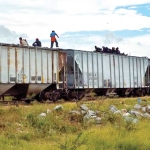U.S. agriculture is competing with Mexican farms for a dwindling supply of farm labor.
Mexican agriculture is doing quite well and needs more workers than are available, as the supply of Mexican workers willing to do farm work is declining.
Mexican farmers are importing labor from further south in Central America, but that labor pool is small. With strong demand for farm workers in Mexico, there’s less need for them to move north across a hostile and hazardous border.
In fact, a new study suggests there are more people returning to Mexico than are coming to the United States.
For several years, U.S. fruits and vegetable growers have been noticing an ever-increasing shortage of seasonal farm labor for crop harvest.
They have associated it with the events in the United States—the post 9/11 tightening of the border with Mexico and increased enforcement of laws intended to crack down on an estimated 12 million workers who are in the United States illegally.
In a paper entitled “The End of Farm Labor Abundance,” University of California-Davis agricultural economists suggest the problem is more complicated and will not be easily solved, even if immigration laws were reformed by a so-far-unwilling Congress and even with less harsh enforcement by the Obama Administration.
They say that changes occurring in Mexico—the long-time source of seasonal farm labor in the United States—are drying up the pool of workers willing to do agricultural work.
Diane Charlton, a graduate student at UC-Davis and one of the paper’s authors, told Good Fruit Grower that the farm-labor supply in Mexico is falling at a rate of about 0.9 percent per year, and has been for some time.
There are about 16 million working-age adults in rural Mexico, so the decline amounts to more than 100,000 workers a year. Not surprisingly, U.S. growers are reporting coming up short of workers by 10 to 15 percent.
Charlton is a grad student of Dr. J. Edward Taylor, who is associated with the Center for Rural Poverty and the Center for Immigration Studies. In this study, they did surveys of rural households in Mexico, returning to the same households in 2002, 2007, and 2010 to find out what work household members were doing.
“The same shift out of farm work that characterized U.S. labor history is well under way in Mexico,” they wrote.
“Worldwide, people transition out of farm work when better opportunities are available,” Charlton said. “Eventually, countries reach this level, and it pulls people out of agriculture. That is happening in Mexico right now.”
Four forces
At least four things are contributing to that:
First, she said, “the non-farm economy in Mexico is doing quite well.” For about 25 years, Mexico has made a concerted effort to develop bilateral trade agreements with other countries, in an effort to boost capital investment in Mexico and create more jobs. Mexico has been quite
successful doing that in automobile manufacturing and other industries.
Second, she said, young Mexicans are becoming better educated, so they are looking for better jobs and are less interested in farm work.
Third, the size of Mexican families is rapidly getting smaller. Instead of seven children, families are now having two children. There are just fewer young Mexicans.
And fourth, the agricultural economy of Mexico is doing well. The growing consumption of, and year-round demand for, fresh fruits and vegetables in the United States has created a booming market for Mexican growers capitalizing on their warmer climate, long growing season, and closeness to the United States.
That is not to say events in the United States, and at the border, have had no effect. Tighter border enforcement and drug-related violence in the border towns are reducing the back-and-forth flow of farm workers, but recession in the United States after 2008 and improving job opportunities in Mexico also reduced the flow.
“Net migration declined to zero in 2010 and maybe to less than zero,” Charlton said. “More people are returning to Mexico than are coming here.”
Fruit, vegetable, and horticultural farmers in the United States have enjoyed an extended period of farm labor abundance with stable or decreasing wages, thanks to an elastic supply of labor from rural Mexico, the paper says.
Implications
“Findings from our data from rural Mexico point to a declining long-term trend in the farm labor supply there. At the same time, an increasing demand for farm workers in Mexico may be creating unprecedented labor competition for U.S. farmers.”
U.S. growers have been paying ever-higher wages to attract workers.
“Farm wages in the United States are rising,” Charlton said, “but not fast enough.”
The paper suggests U.S. farmers can react by shifting away from labor-intensive horticultural production, increasing mechanization, or seeking migrant workers from other countries. Mexico, however, has provided a convenient and large pool of farm workers for many years.
Their study data suggest that the decrease in migration to U.S. farm jobs is the consequence of long-term structural changes in the supply of Mexican labor rather than a temporary response to the U.S. recession.
“U.S. agriculture appears to be doubly adversely affected by the decline in the supply of immigrant labor and the shift in the immigrant labor supply away from farm work,” they say. •








Leave A Comment